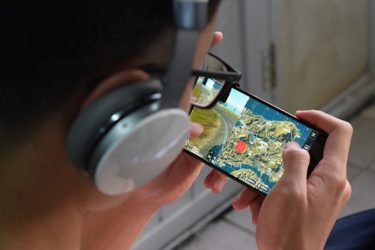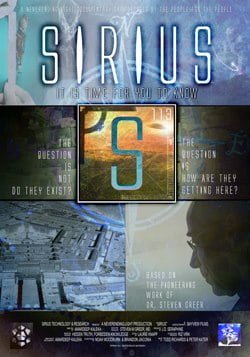An absolute tyre fire. Several storeys high and visible from space.
That’s my search history every time I’m asked to do something ‘fun’ by a member of the skeptics community. A recent appearance on a podcast, for example, required ‘just a bit of research’. Now Youtube is trying desperately to show me nought but QAnon videos!
You’d think I’d learn my lesson, but here we are again. When I was asked to write this article the brief looked promising; a topic of my choice investigated using the critical eye of an archaeologist. All I had to do was pick a topic that couldn’t possibly be sad/infuriating/convoluted.

Inspiration came quickly, but from an unexpected angle. During the lockdown I’ve found a fun way to keep in touch with my friends is to play the online video game PUBG (although most of the voice chat included some variation on, “it’s actually been really nice to have to time to reconnect with… FOOTSTEPS, THERE ON YOUR LEFT, GET HIM, GET HIM!”).
To keep things fresh, the developers add themed events and as fate would have it the latest update landed just when I needed it. I logged on, there it was: a great big Egyptian pyramid shaped spaceship. That’s right, we’re doing ancient aliens!
The idea that aliens, and not humans, are responsible for many ancient monuments is a surprisingly tenacious one. It’s also an idea which appeals to tabloids as an easy way to fill column inches and Google brought up several promising articles. I decided to look at the most recent, published 30th July 2020 in the Express, with the headline “Archaeology bombshell: Strange discovery of mysterious ‘alien’ figure“.
Leaving aside any discussion of what an ‘archaeology bombshell’ might entail (does it blow everything up, but leave the pieces meticulously recorded?) this article covered the 2007 discovery of a 15cm long mummy in the Atacama Desert. Despite the headline, the article gave little time to the idea that the specimen was an actual ‘alien’.

Instead, it covered an ancient DNA analysis (Bhattacharya et al 2018) which suggested that the reason for the appearance of the mummy, identified as a premature human infant, was that the individual had multiple physical malformations including an ‘unusually’ elongated skull, skeletal malformation and ‘missing’ 11th and 12th ribs, all identified by mutations in the genes.
That’s the end of that right? An alien myth debunked using DNA evidence. Well it would have been if I hadn’t decided to read the original study the article was based on, just to see if anything had been lost in translation from boffin to hack.
Off to google again. The original piece was there, but that wasn’t what caught my eye. I’m drawn to two other links. The first is a rebuttal and the second is an editorial response to the rebuttal. Academic fight! Get everyone around and chant ‘peer review’ until someone cries!
The rebuttal (Sian E Halcrow et al, 2018) made for interesting reading. Written by an interdisciplinary team of archaeologists, anthropologists, gynaecologists and anatomists, their issues with the original paper could be summed up as: “What the hell are you talking about?”. It reviewed each of the supposed mutations and pointed out how they are completely normal features of a foetus at 15 weeks gestational age. The elongated skull? Moulding of the cranium as it passed the cervix. The missing ribs? What little data we have on the formation of the 11th and 12th ribs suggest they don’t appear until later in gestation. Other skeletal malformations? Nope, everything looks normal thank you.
A very smart geneticist (my brother) said, “People have a fuckton of variation…mutations can be very unpredictable”. In other words, it’s more about probabilities than certainties, but the temptation remains to treat it like it’s the other way around. Ancient DNA is becoming more popular in the field of archaeology. The appeal is understandable, to look beyond bones to physical attributes which might not be preserved. These areas were generally a closed book and ancient DNA analysis appeared to be a way to start turning the pages, but it’s important not to get carried away.

Another issue raised was the ethics of how these remains were treated. Firstly, it is important to note that the mummy is currently held in a private collection in Spain. Secondly, the instigating factor for the study is rather dubious: it was commissioned as part of a documentary called Sirus, which claimed the mummy was proof of ancient aliens. The authors approached the film-makers in order to offer their services to help define the true nature of the specimen. In their editorial response (Nolan and Butte, Genome, May, 2018), the authors claimed that their findings “provided a definitive scientific basis to put a stop to unscientific accounts”. A claim that would hold more water if the documentary team hadn’t ignored the findings and gone with the alien line anyway.
The information they were able to recover gave a clue to another troubling aspect of this story; the possible period from which the skeleton originated. In Sirus, the claim was made that it was thousands of years old; however, given the preservation of the material the geneticists posited it was 500 years old or younger. Personally, I think it might be a bit more on the recent end of that estimate.
The original paper included a theory the mutations were the result of nitrate poisoning. While this idea wasn’t expanded on, it isn’t entirely pulled out of their collective bums, either. The mummy was possibly found by a ‘treasure hunter’ (eye rolls for infinity) and, though the specific providence is unknown, it is believed to have come from around La Noira, once a thriving town in the heart of the Chilean nitrate mines. Founded in 1826, it was occupied until WWI when the Chilean nitrate industry collapsed.
The keen-eyed among you may have already noticed that 1826 isn’t 500 years ago, and as such if the mummy is from La Noira it is likely to be either C19th or even C20th in origin.
So, lets recap: instead of an ancient alien, what we have instead is the mummy of a premature baby – which may have died recently enough to have still living relatives – being stolen by a treasure hunter, sold out of country to a private collection in Spain, after which it is held up as proof of aliens in a documentary, and cut up to find out if it’s human. And then a paper was written about how horribly mutated it was, even though it wasn’t… you see what I mean about researching things for the skeptics?!
At the core of this story is a very human tragedy: a family losing a child. It raises many questions around exploitation, the treatment of human remains, and the colonial mindset that sees a mummified foetus privately owned by someone on the other side of the world.
Those are questions for another day and for another article. Because, as much as it leaves my internet browser looking like a Nazi who picked the wrong grail to drink from, if I’m being honest, I always enjoy when the skeptics come calling. At the very least I know it won’t be dull.



